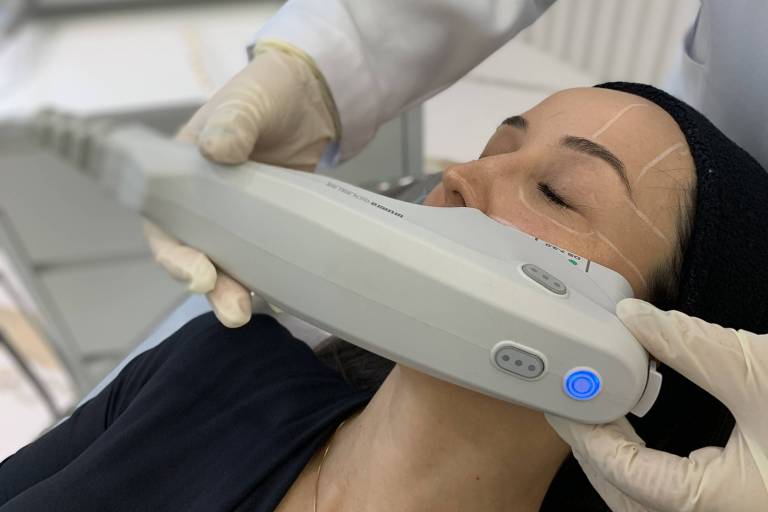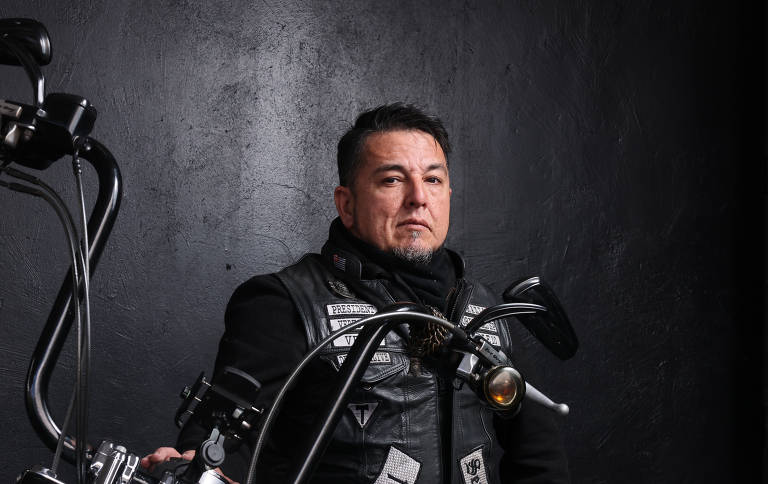Would you pay $200,000 to look half your age?

Months before her 70th birthday, Kris Jenner appears to have returned to her 35th birthday. Or at least that's how it seems when the Kardashian matriarch revealed a preternaturally youthful face in Instagram posts ahead of Lauren Sánchez's bridal shower earlier this year.
Looking like one of her daughters, with surprisingly firm, wrinkle-free skin and wide-open eyes, Jenner quickly sparks speculation on social media about which surgical procedure could achieve results that not only reverse but completely defy the signs of aging—and also about the surgeon behind this cosmetic magic.

Jenner's latest work—which her rep later confirmed to Page Six was performed by New York doctor Steven Levine—isn't the only celebrity plastic surgery to spark a frenzy of speculation on TikTok this year. In Hollywood , much younger women like Emma Stone , 36, Anne Hathaway , 42, and Lindsay Lohan , 39, have been the subject of questions about potential facial makeovers.
The same goes for actors like Brad Pitt , Tom Cruise , and Bradley Cooper , who draw attention to their defined cheekbones and jawline, rarely seen in middle-aged people. They don't publicly confirm any plastic surgery, however. Lohan, for example, attributes her renewed appearance to a new skincare routine, a healthier diet, and less invasive procedures like Botox.
These days, many seem to be turning to a procedure that became popular among the wealthy in the 1980s and was previously associated with people over 50. Now, however, thanks to advances and cutting-edge surgical techniques, it has been revamped for the 21st century and a client base under 40.
"There's been a renaissance in the facelift ," says Nora Nugent, president of the British Association of Aesthetic Plastic Surgeons.
However, the facelift has undergone a...revitalization. While there's no single "magic" facelift, advances in the technique now focus on lifting and firming the lower face by targeting the superficial muscular aponeurotic system (SMAS), a layer essential for facial movement and support.
According to London-based aesthetic doctor Jonny Betteridge, "By repositioning the SMAS, rather than simply stretching the skin, surgeons achieve more natural and long-lasting results."
The deep-plane facelift goes further, he adds. "By releasing and lifting the tissue below the SMAS, it can provide more significant improvement in the midface and nasolabial folds in suitable patients. This deeper approach can offer a more comprehensive lift without an overly stretched appearance."
Nugent says surgeons have also learned to effectively combine facelifts with other procedures, such as blepharoplasty (eyelid surgery), fat transfer, and brow lifts, for more balanced and harmonious results. Rejuvenating one area while leaving another untouched can draw attention to something artificial, she explains. Furthermore, the skills of the practitioner are essential, with a select group of elite doctors emerging. Betteridge observes "a clear trend toward rejuvenated and sculpted looks, often the result of discreet and highly skilled surgical techniques."
With current beauty standards shaped by Ozempic , online image filters, and artificial intelligence—and where "tweaks" like Botox and fillers are increasingly the norm—those who can afford them are going to greater lengths to achieve a perfect aesthetic (in their eyes). And the appetite for these procedures isn't just limited to celebrities. According to the British Association of Aesthetic Plastic Surgeons, facelifts and necklifts increased 8% in 2024, while a report by the American Society of Plastic Surgeons shows that in the US, there was a 9% increase in facelifts between 2022 and 2024. Among men, facelifts and necklifts increased 26%.
Surgeons attribute this broader trend to improvements in surgical techniques and the correction of "Ozempic face"—loss of volume and sagging skin due to rapid weight loss after using GLP-1 medications. It's also due to increased information on social media and the limited use of non-surgical interventions like fillers and Botox.
Nugent believes the impressive results of new facelift techniques are leading more people to reconsider whether they're worth the financial and physical investment. The days of 1980s facelifts, which created the "wind tunnel effect"—overstretched skin that smoothed wrinkles but distorted features—are over, she says.
Wendy Lewis, a beauty industry consultant in New York who previously advised private patients on plastic surgeons, adds that what she describes as Jenner's "natural" look will inspire others to follow suit. "A lot of women don't realize that's how it's supposed to be."
This treatment isn't always cheap. Prices vary, but high-profile celebrities often turn to expensive surgeons for deep-plane facelifts, which cost more than a SMAS lift, ranging from $100,000 in New York and Los Angeles to over $200,000, according to some reports.
Actress Jameela Jamil recently wrote on Instagram: "It's just a new form of elitism, separating rich and poor." Wendy Lewis argues that part of the competition for top surgeons is due to branding and recommends researching to get the best results. "[People] want the best and think the higher the price, the better the work. That's not necessarily true. It's just status."
Still, what kind of message is conveyed when you pay for a face that blatantly defies the laws of physics and biology? According to Paul Hokemeyer, clinical psychotherapist and author of "Fragile Power: Why Having Everything Is Never Enough," major plastic surgery used to be something to keep secret. But in the era of Trump's so-called "boom boom"—with ostentatious, 1980s-style displays of wealth—both the procedure and the person who performed it may increasingly become something to flaunt.
"Successful surgeries have become a status symbol that trumps any Birkin bag," he adds. "Having access to the right surgeon, who delivers impeccable work, signals not only big money, but that you're part of the inner circle of the well-informed."
Hokemeyer says the top 1% seeks the homogenized look that plastic surgery provides, seeking a sense of belonging. "It's like AI in that respect. All forms of individuality are erased. People in positions of wealth and power must deal with cultural pressures that demand they look, act, and behave like other members of their social class."
Not everyone is thrilled with the rise of facial transformations, and some in the entertainment world have spoken out. Actress Jamie Lee Curtis recently expressed horror at women who have gone through the "cosmetic industrial complex and disfigured themselves." Veteran TV studio executive Bonnie Hammer reports hearing complaints from directors and producers that "younger actresses are looking more and more the same, older actresses are expressing less and less with their faces, and finding someone to play a common, 'everyday' character has become extraordinarily difficult."
Among non-celebrities, London plastic surgeon Aamer Khan has seen an increase in younger patients over the past decade. This trend, which he attributes to social media and describes as "beautification"—not a desire to rejuvenate—may involve blepharoplasty, or the removal of buccal fat (between the cheek and jawbone).
"When you look at someone's social media presentation, it's been digitally altered," Khan says. "They've done digital surgery on themselves. They like this version of themselves and want it."
Attitudes are clearly changing. As The Hollywood Reporter declared last month, "plastic surgery has finally come out of the closet, turning actors into evangelists and top doctors into superstars." Khan attributes this transparency to a generational shift in attitudes among baby boomers—for whom plastic surgery was a shameful secret—and those under 40, who are more likely to vocalize their opinions and behaviors.
On the plus side, this brings transparency to previously hidden procedures. Kylie Jenner , Kris Jenner's 28-year-old daughter, recently shared the exact size of her breast implants, their placement, and the surgeon—Garth Fisher—with a fan who asked on Instagram. Khloé Kardashian revealed her rhinoplasty and fillers, among other things, in response to a video by Betteridge about her facial changes, and said she's open to future procedures. "When the time comes, and if I decide to, I know some great doctors."
Fashion designer Marc Jacobs documented his facelift on social media, criticizing past secrecy. "It seems so crazy when an actor or public figure denies having something done. And they're like, 'Oh, it's olive oil, I shower with sparkling water.' Like, come on. All of those things may be true, but they're not the reason your neck is firm."
uol




%2Fhttps%3A%2F%2Fi.s3.glbimg.com%2Fv1%2FAUTH_59edd422c0c84a879bd37670ae4f538a%2Finternal_photos%2Fbs%2F2025%2F6%2Fa%2F88SAqISamUwXzneNAdtg%2F13608777-1080p-4000k-h264-2ch-128k-44100-aac-1754594941.00-02-52-23.quadro001.jpg&w=3840&q=100)


